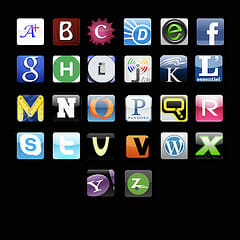Thursday is guest post day here at Duct Tape Marketing and today’s guest is Rebecca Otis – Enjoy!

Pinterest, Instagram, Vine, SlideShare, Google+, profile cover photos. Online marketing content is becoming synonymous with visual content. Other than Twitter and maybe traditional blogs, there seem to be few online marketing tools that are primarily textual, but even Twitter enables photo attachments and blogs are often accompanied by key photos and videos.
What Text Adds to Imagery
Perhaps photos, infographics, videos, and even cartoon sketches seem almost required to be taken seriously in the content marketing playground because there’s so much noise, so many self-publishers and content creators that incorporating something visually appealing helps grab in-demand attention. Or, maybe it’s because visuals make content more experiential. When you relate to an image, or can absorb an idea in a simplistic or colorful way, you may connect with it more, not to mention visuals make words come to life.
What Imagery Adds to Text
It works the other way around too. Captions on photos help describe what you are looking at, subtitles help clarify the story told in a video, and surrounding text often provides important details like citing a source. Textual and visual content go hand-in hand. So, how can you make them work together to invite your visitor, reader, viewer in, keep them engaged, and achieve your marketing goals?
Consider these elements to make your textual and visual content work together:
- Medium – Once you determine the goal of your content marketing piece, determine whether it makes sense to present it in more textual format, a more visual format, or a combination of both. Choose a medium based on whether you want to be creative, informative, quick to consume, or even idea-generating.
- Proximity & Placement—When you add a visual element (other than font) to content, make sure it is placed strategically. Are you starting a blog post with an image to draw the reader in? Are you including a photo of an example you mention in a case study? Make sure the photo is near the related text.
- Support or Integration – Determine if visual content is intended to support textual content or to be integrated into the entire piece to get your point across. (This can help determine medium.)
- Thematic or Instructional—Decide if your visual content will summarize the theme of the content or educate the visitor. This will help determine the makeup of your visual content (a related snapshot versus a series of step-by-step screenshots, for example).
- Sizing, Style, and Color—Consider the size of your visual content and textual content. For example, visual content is the primary focus of an infographic. But, the info in the graphic is important to achieving the goal of the piece. Make sure the textual statistics or main points are sized appropriately to be legible on multiple screen sizes and integrated into the graphic. If you’re writing an industry-related blog post with invaluable information, make sure visual content is sized appropriately to complement the content and not take away from the focus. Make sure the style and color fit your brand too. Are you a vintage clothing brand? Including images that reflect this style are key to driving your tone and values home through your content, which should be an extension of your brand.
- Quality—Whether your content marketing piece is primarily textual or visual, quality is important. Make sure the writing is professional, grammatically correct, and presents strong and valuable information. Equally important, make sure your visual elements that accompany a top-notch written work are also sharp. A poor quality photo could appear to reduce the credibility of a well-written article, and poor textual content can diminish the value of visual content.
Next time you’re reading or writing an article, pay attention to how the visual and textual content work together, or don’t. Consider these factors when investing time, money, and energy into attention-grabbing content marketing to make sure that what you see and what you read work together to achieve your goals.
 Rebecca Otis is the Content/Social Media Manager at Digital Third Coast, a Chicago digital marketing agency that helps businesses find and connect with customers through SEO, PPC, and content and social media. She is also a writer and speaker at national events including BlogHer and was named an Austin Business Journal Profiles in Power Women of Influence Rising Star Finalist in 2012. You can find Rebecca on Google+, Twitter, and LinkedIn.
Rebecca Otis is the Content/Social Media Manager at Digital Third Coast, a Chicago digital marketing agency that helps businesses find and connect with customers through SEO, PPC, and content and social media. She is also a writer and speaker at national events including BlogHer and was named an Austin Business Journal Profiles in Power Women of Influence Rising Star Finalist in 2012. You can find Rebecca on Google+, Twitter, and LinkedIn.

